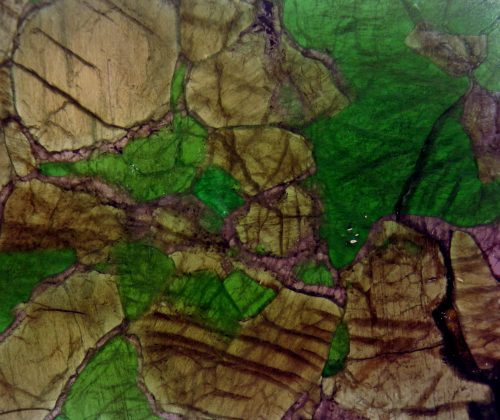The end-Permian extinction was devastatingly destructive on a scale hard to comprehend. Ozone degradation and large fluctuations in temperature made the earth unsuitable for habitation, leading to the extinction of over 90 percent of all marine life and over 70 percent of terrestrial life. There is no singular theory for what caused the largest extinction in Earth’s history, but new research from a team led by the University of Manchester’s Michael Broadley adds evidence to the theory that a series of volcanic eruptions in the Siberian traps triggered this extinction.
Previous research has shown that volcanic magma traveling through these traps could have carried volatiles such as halogens—highly reactive elements like chlorine, florine, and bromine—from within Earth’s crust to the atmosphere. These volatiles, chemicals which evaporate easily into the atmosphere, would have caused the catastrophic changes that led to the end-Permian extinction. Broadley’s team analyzed the composition of rocks formed from this magma to determine where these halogens came from.
The team analyzed two layers of rock from the Earth’s crust at the Siberian traps. The older, and therefore deeper, of the two rock layers contains a collection of minerals called Udachnaya. The eruption that triggered the end-Permian extinction carried up these minerals and the magma that would come to surround Udachnaya. The eruption that formed the second layer of rock, which contains the mineral collection Obnazhenaya, came after the end-Permian extinction. When analyzed, the Udachnaya rocks had a much higher halogen composition than the Obnazhenaya rocks. The first eruption, which settled Udachnaya, carried about one hundred times as much chlorine and iodine as the second and almost 700 times as much bromine.
But where did these volatiles come from? Ray Burgess, a professor at the University of Manchester and one of the researchers running the study, explains that the volatiles start in the ocean. Ocean water, and thus the ocean floor as well, absorbs a large amount of volatiles. When a plate of the ocean floor is forced beneath another plate, it carries the volatiles with it, bringing them much closer to the hot mantle. “Volatiles are boiled off that plate,” Burgess said. As a result, the volatiles end up stuck on the bottom of the crust.
While beneath the crust of the earth, the magma eventually released in the first explosion absorbed large quantities of these volatiles. The eruption carried the volatiles all the way to the earth’s atmosphere. The magma then cooled to become the layer containing Udachnaya. The second explosion, whose magma would later form the layer with Obnazhennaya, travelled a similar route as the first. However, Obnazhennaya had a much lower halogen composition because most halogens had been carried up in the first explosion.
The halogens, along with other volatiles that were released into the atmosphere during these eruptions, likely caused a near to total loss of global ozone, which then increased UV-radiation. As a result, there was a massive increase in mutation and sterilization in organisms. Volatiles also added greenhouse gases, causing global temperatures to wildly fluctuate at a rate organisms could not adapt to. Both of these factors helped to contribute to the unfathomable loss of life seen in this extinction event.
The Siberian flats currently lie dormant, but studying these eruptions still has modern day consequences. As Burgess put it, “By understanding the process of collapse and recovery of ozone levels, we will be able to better understand the biological impacts of future eruptions.”

